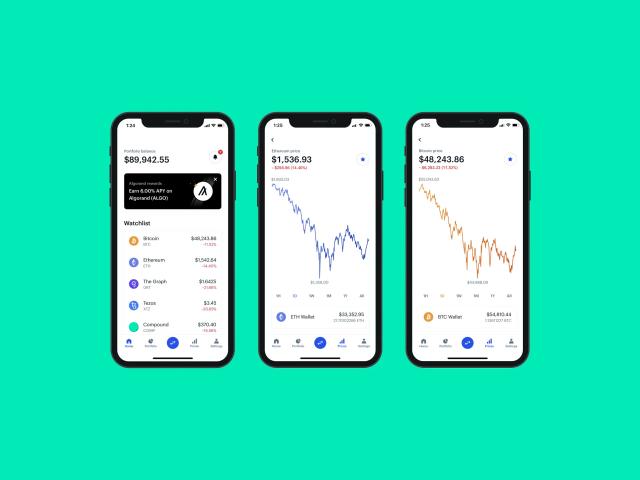
BEGINNER’S GUIDE
by: Towqeer gilkar

Understanding the Mechanics of Crypto Derivatives
Cryptocurrency derivatives are financial instruments that derive their value from an underlying cryptocurrency asset. These derivatives have gained significant popularity in the crypto market, offering traders and investors various opportunities to speculate, hedge, and manage risk. In this article, we'll delve into the mechanics of crypto derivatives, how they work, and their role in the cryptocurrency ecosystem.
What Are Crypto Derivatives?
Crypto derivatives are financial contracts whose value is based on the price movement of an underlying cryptocurrency or a basket of cryptocurrencies. Unlike spot trading, where assets are bought or sold for immediate delivery, derivatives allow participants to speculate on the future price of cryptocurrencies without owning the actual assets.
Types of Crypto Derivatives
There are several types of crypto derivatives, including:
1. Futures Contracts
Futures contracts obligate the buyer to purchase, and the seller to sell, a specified amount of cryptocurrency at a predetermined price and date in the future. These contracts are widely used for speculation and hedging.
2. Options Contracts
Options give the holder the right (but not the obligation) to buy or sell a cryptocurrency at a predetermined price (strike price) on or before a specified expiration date. Options provide flexibility and are used for risk management.
3. Perpetual Swaps
Perpetual swaps, also known as perpetual futures, are similar to traditional futures contracts but without an expiration date. They enable traders to maintain positions indefinitely.
4. Betting Contracts (Prediction Markets)
Prediction markets allow users to bet on the outcome of specific events or the future price of cryptocurrencies. These markets rely on smart contracts to facilitate bets.
Mechanics of Crypto Derivatives
1. Leverage
One of the key features of crypto derivatives is leverage, which allows traders to control a larger position with a smaller capital investment. For example, a trader can use 10x leverage to control $10,000 worth of Bitcoin with only $1,000 in capital. While leverage amplifies potential profits, it also increases the risk of significant losses.
2. Margin and Collateral
To enter into a derivatives contract, traders typically need to deposit a certain amount of collateral, known as margin. The margin requirements vary depending on the exchange and the specific contract. Margin trading allows traders to access leverage.
3. Mark-to-Market and Settlement
Derivatives contracts are marked to market regularly, meaning the value of the contract is adjusted based on the current market price of the underlying asset. Settlement can occur in various ways, including physical delivery of the asset or cash settlement, depending on the type of contract.
4. Risk Management
Derivatives serve as essential tools for risk management. Traders and investors can use derivatives to hedge against price volatility or to profit from price movements, depending on their market outlook.
Market Participants
Several types of participants engage in crypto derivatives trading:
1. Speculators
Speculators aim to profit from price movements in the cryptocurrency market by taking long (buy) or short (sell) positions using derivatives.
2. Hedgers
Hedgers use derivatives to protect their cryptocurrency holdings from adverse price movements. For example, a Bitcoin miner may use futures contracts to lock in a future selling price.
3. Arbitrageurs
Arbitrageurs seek to profit from price discrepancies between different cryptocurrency exchanges or between the spot and derivative markets. They exploit these differences by buying low and selling high.
4. Options Writers
Options writers (sellers) earn premiums by selling options contracts to buyers. They assume the obligation to fulfill the contract if the buyer decides to exercise the option.
Risks and Considerations
Crypto derivatives trading carries inherent risks:
Volatility Risk: Cryptocurrencies are known for their price volatility, which can lead to significant gains or losses in derivatives trading.
Liquidity Risk: Liquidity can vary across different derivatives contracts and exchanges, impacting a trader's ability to enter or exit positions.
Counterparty Risk: In centralized exchanges, traders are exposed to counterparty risk, meaning they rely on the exchange to fulfill contract obligations.
Regulatory Risk: The regulatory landscape for crypto derivatives varies by jurisdiction and may change over time.
Conclusion
Crypto derivatives play a vital role in the cryptocurrency market, offering traders and investors various tools for speculation, hedging, and risk management. Understanding the mechanics of these derivatives is crucial for anyone looking to participate in this market. As with any financial instrument, it's essential to conduct thorough research, use risk management strategies, and be aware of the potential risks involved in crypto derivatives trading.
Related Blogs
Our great way to help make people keep working for us is to invest in their overall job satisfaction by providing them with the perks and benefits they want most.




